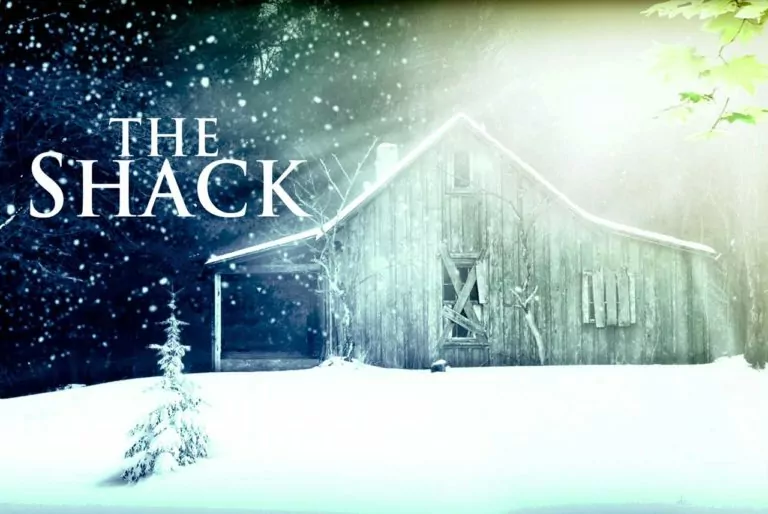The Shack, the sensational book by William P. Young, was the #1 paperback trade fiction on the New York Times Best Sellers list for more than a year and a half. Over 18 million copies have been sold. It has been praised by none other than Regent College theologian Eugene Peterson and recording artist Michael W. Smith.
The Shack is a gripping story. Mack’s little daughter, Missy, is kidnapped and murdered while Mack is on a camping trip with his three children. The place where she was killed, a shack in the mountains, is discovered, though Missy’s body and the killer are not found. Some time later, Mack receives a letter from God, “Papa”, inviting him back to “the shack.” Mack goes to the shack and meets the Trinity there. God the Father is an Afro-American woman; Jesus is a mildly clumsy blue jeans-wearing man; the Holy Spirit is an ethereal woman called Sarayu.
In unique sessions with each of the Trinity, Mack struggles with anger against his abusive father and his hatred against Missy’s killer. After he forgives his father, God the Father appears to him – and for the rest of the story – as a man. After Mack forgives the murderer, God leads Mack to Missy’s body and the four of them bury her. Mack, then, returns home to his wife Nan and his other two children.
It is a very imaginative story, but contains some serious theological difficulties.
Running up against the second commandment
Young runs into trouble with the second commandment which says that we are not to make an image of God in any way and that God cannot and may not be visibly portrayed in any way. When Young “paints a picture” of God with words, he bumps up against the second commandment. Arguably, one could portray Jesus, since he is a true man, but one may not portray the Father nor the Holy Spirit. “You saw no form of any kind the day the LORD spoke to you at Horeb out of the fire. Therefore watch yourselves very carefully, so that you do not become corrupt and make for yourselves an idol, an image of any shape, whether formed like a man or a woman.…” (Deu 4:15,16).
Wrong on the Trinity
Young’s view of the Trinity is not right. God the Father, at one point in the book, says that he is truly human in Jesus, and he has scars on his wrists to prove it. The wrong teaching that Youn
g subscribes to at this point is likely patripassionism, the teaching that the Father also suffered. Young confuses the persons of the Father and the Son. The ancient Athanasian Creed warns against this.
Wrong on the atonement
Young also espouses a wrong view of the extent of the atonement. Whereas scripture teaches that Christ died for the forgiveness of the sins of his people, Young says that God has forgiven all sin in Christ and that it is up to the human individual to choose relationship with the Father. His view of the atonement is Arminian (see Chapter II, Canons of Dort); his view of man’s unregenerate will is Pelagian (see Chapter III/IV, Canons of Dort).
Although it’s a nice story to read, I cannot recommend The Shack because of its many doctrinal errors.
This review was originally published in December, 2008 Year End issue of Clarion magazine, and is reprinted here with permission. Some of the numbers have been updated to 2016. Rev. George van Popta is the Minister Emeritus for the Jubilee Canadian Reformed Church.







